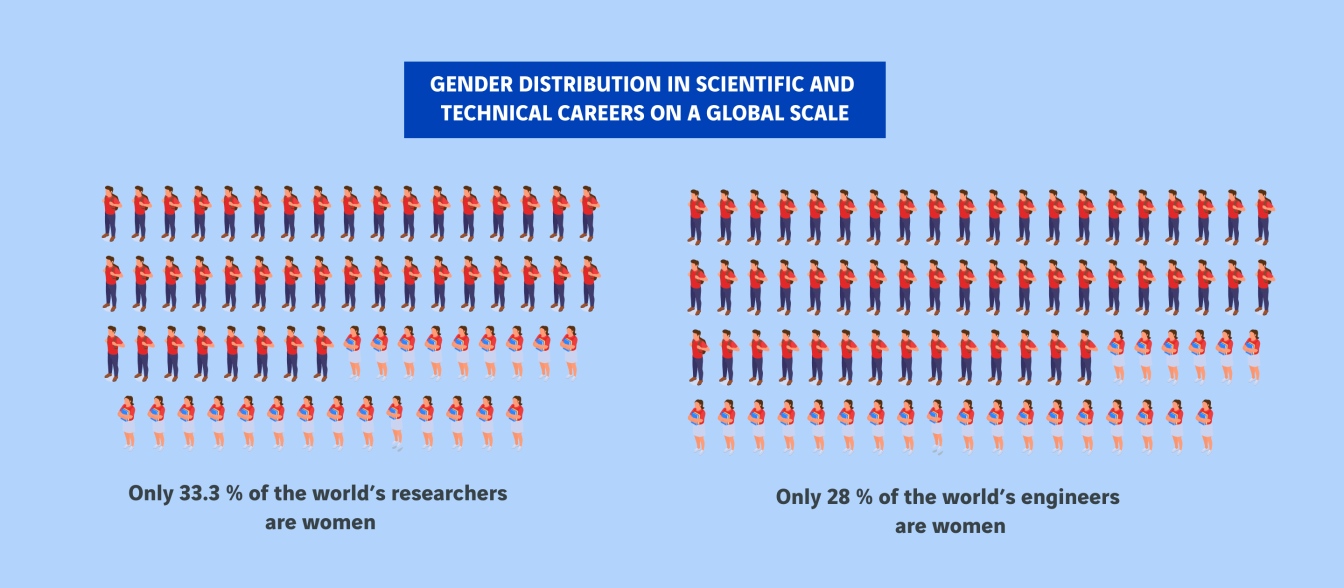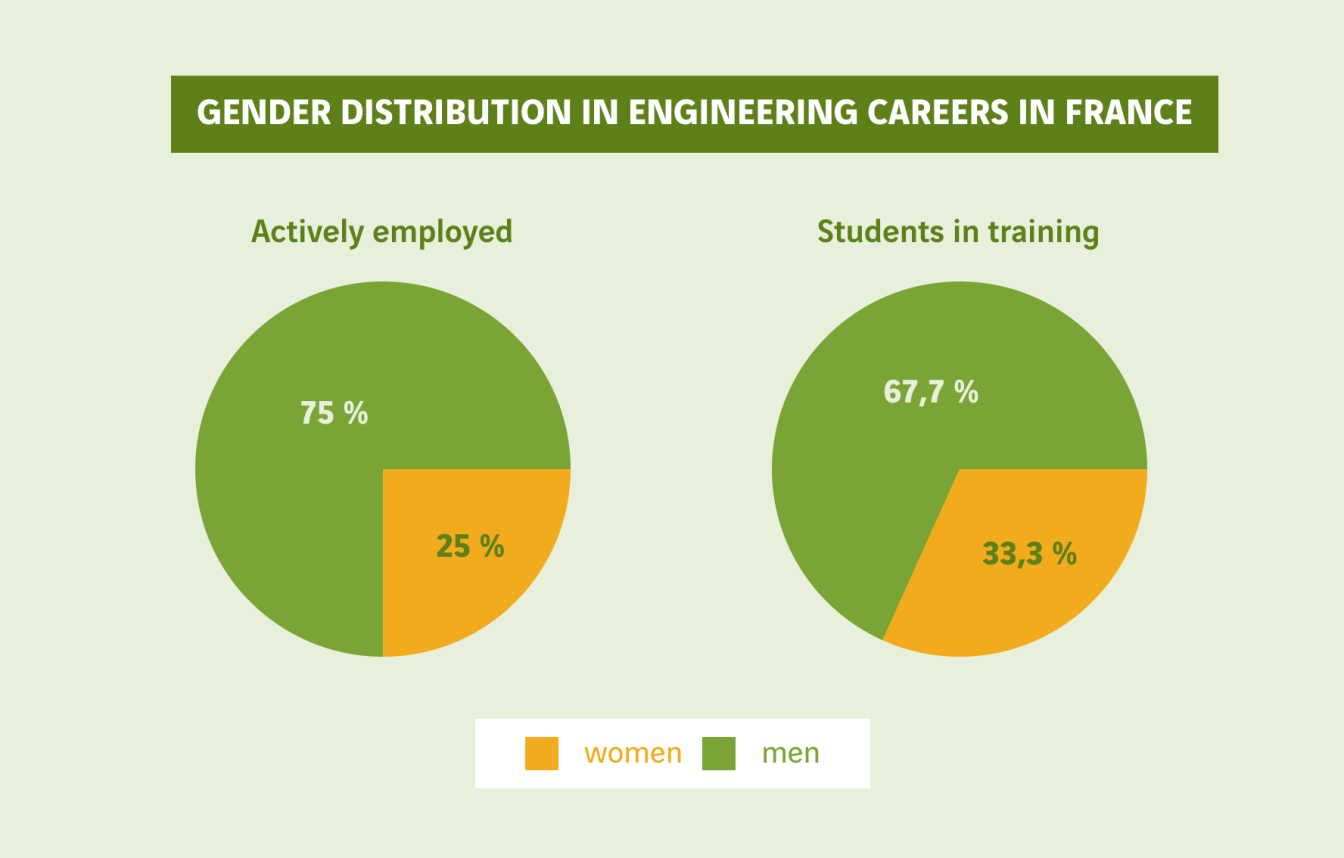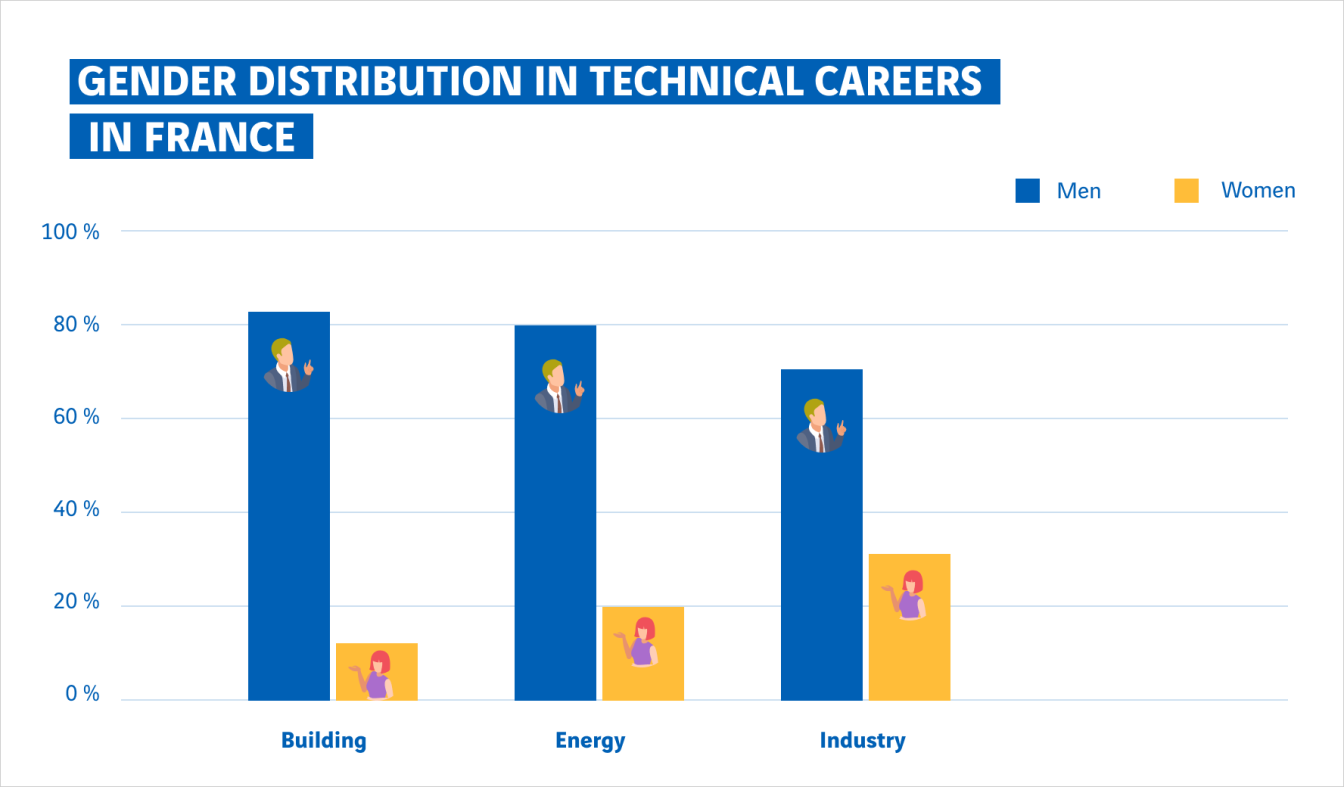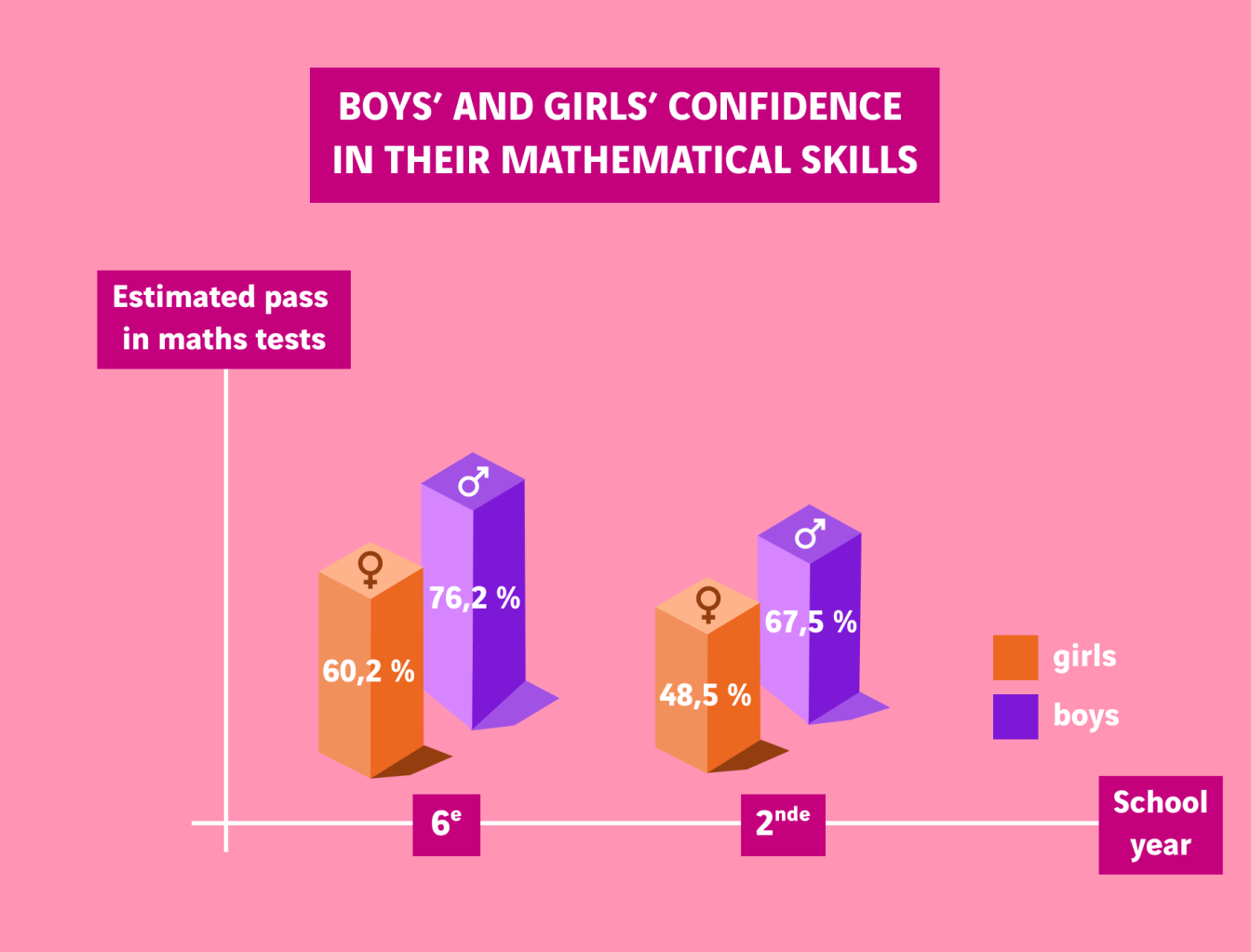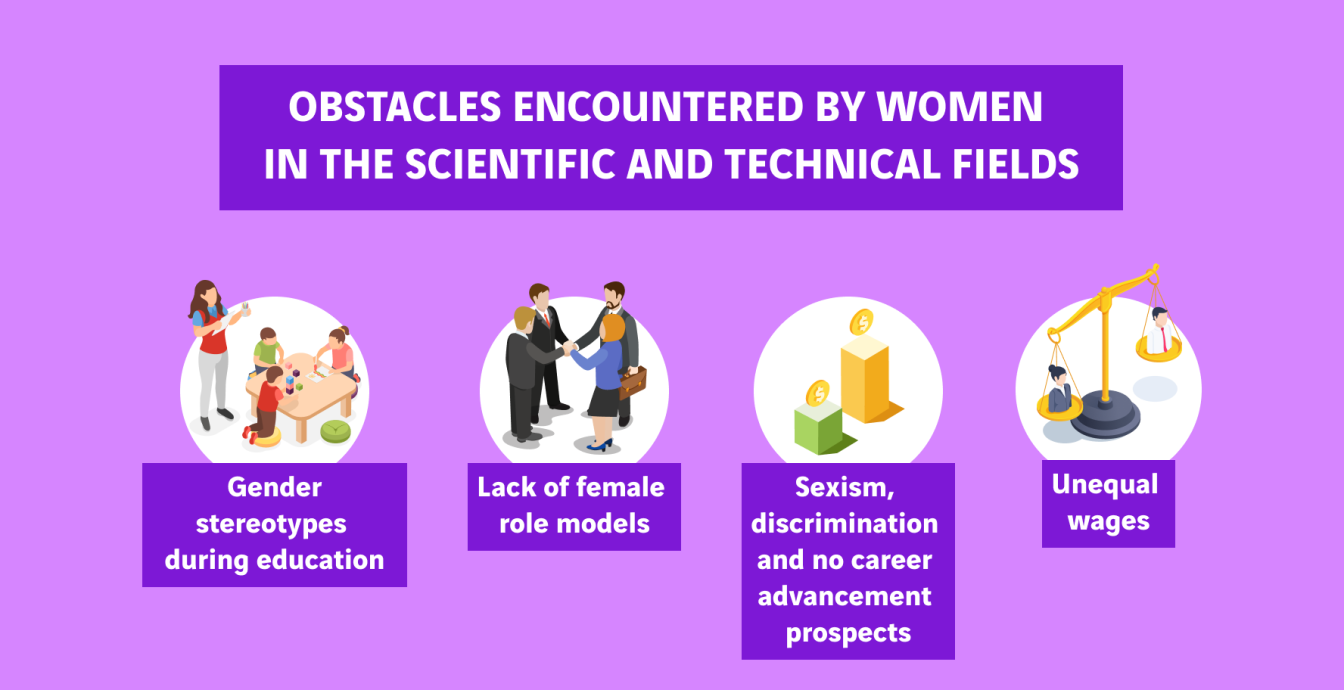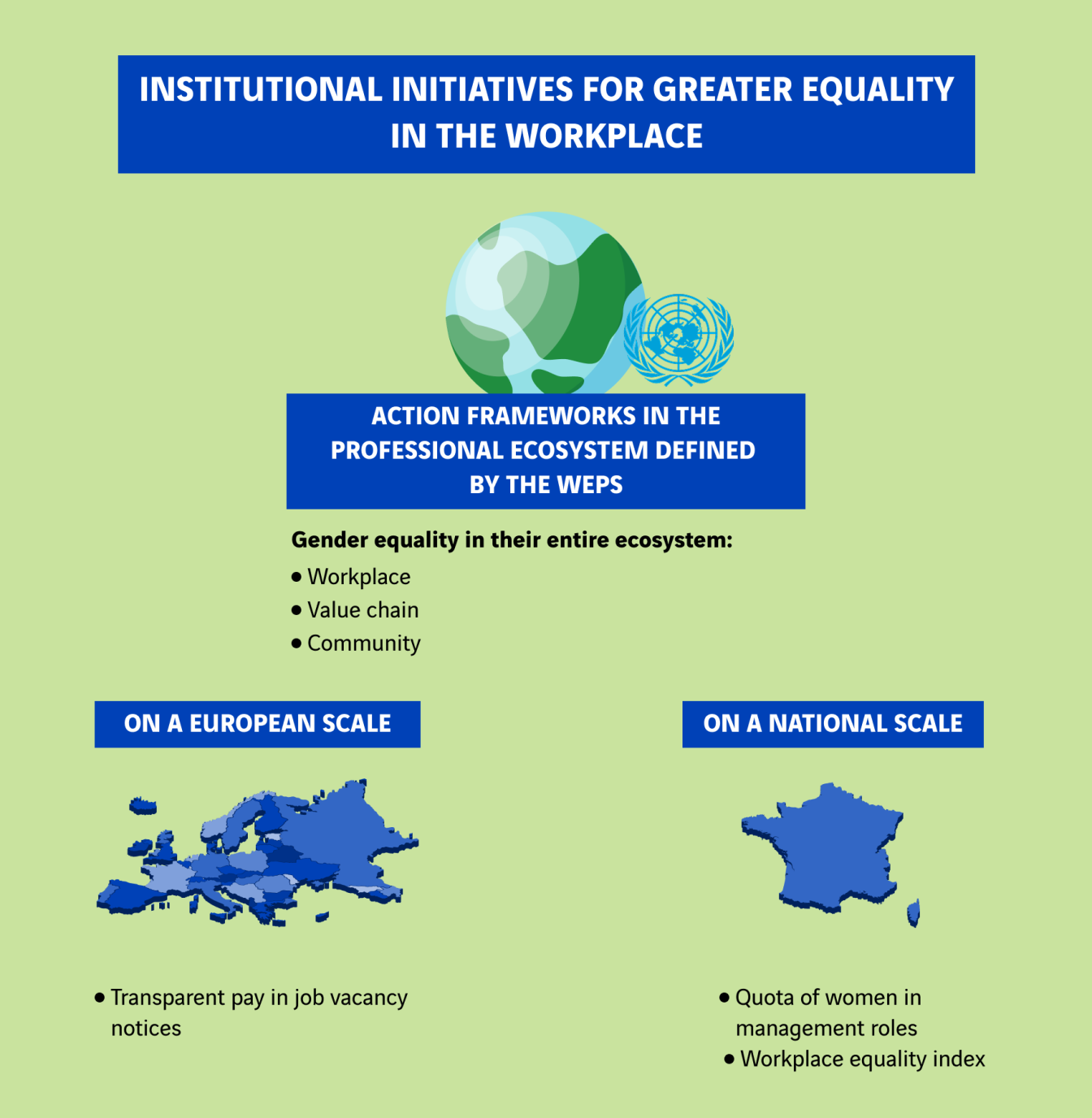Addressing the challenge of gender equality in scientific and technical careers
Less than one in three scientists is a woman. There are many obstacles that steer women away from embarking on a scientific or technical career, whether a lack of careers guidance in schools, issues with current learning pathways or even the stereotypes that continue to plague these professions. Companies, institutions and the education system are taking action to reverse the trend.
Women under-represented in scientific and technical carrers
When it comes to the working world in France and also on a global scale, there is no escaping the fact that women are still under-represented in scientific and technical activities.
For example, on an international level:
The same trend has also been confirmed in France, although slight differences have been identified in some sectors.
In engineering, women represent[3]:
- a quarter of all practising engineers;
- a third of engineering undergraduates.
The gender gap in the scientific and technical fields has a number of knock-on effects. On an individual level, the overwhelming proportion of men working in the sector discourages women from considering a scientific or technical career. The ability for a company to harness a wide range of approaches is key for sharpening its competitive edge, so this situation can harm its capacity to stay ahead of the innovation curve. Finally, the lack of women role models in these fields has the effect of perpetuating the self-censorship phenomenon seen in the younger generations.

VINCI Mixed Cup: sport as a driving force for promoting gender diversity
This football tournament is held every year in the greater Paris region by Paris FC and VINCI, and features girls and boys in the same team. This initiative is a powerful sign for breaking down traditional gender barriers from an early age.
Why are there so few women in scientific and technical carreres?
Stereotypes and social determinism: biases that start during childhood
Even though girls are just as proficient and capable as boys when it comes to science, girls only account for 20% of all students enrolled on two-year preparatory courses to gain admission to one of the prestigious engineering schools in France[7]. Even though girls are just as proficient and capable as boys when it comes to science, girls only account for 20% of all students enrolled on two-year preparatory courses to gain admission to one of the prestigious engineering schools in France.
How confident are girls at maths?
Even as early as primary school, girls are less confident in their mathematical skills[1] than boys. For example, by the time that they are 11 or 12:
- 60.2% of girls sitting a maths exam will think that they have passed
- compared to 76.2% of boys.
That gap widens further when they reach 13 or 14:
- only 48.5% of girls will think that they have passed
- compared to 67.5% of boys.
Deeply entrenched cultural representations also lead to certain professions being typecast as “male” or “female”, which has an influence on young women when choosing their future career. Engineering, construction and energy are still widely dominated by male stereotypes, which may dissuade young girls from pursuing a career in those industries.
In an effort to tackle the problem of social determinism, the Fondation VINCI pour la Cité has been working alongside the Rêv'Elles association, since 2020 to assist with its mission of encouraging young women from working-class neighbourhoods to discover several different professions, including careers in the scientific and technical fields. Every year, several dozens of the VINCI Group’s employees lend their support to the association, whether acting as mentors, getting involved in visits, workshops or immersion days, or taking part as examiners in award boards.
Women in scientific and technical careers: a path strewn with obstacles[1]
- 82% of women working or studying in the scientific or technical fields have been confronted with gender stereotypes during their education.
- 83% are worried that they will be subject to sexism, discrimination or the glass ceiling effect as women engineers or technicians.
- 48% of female students believe that they have had a lack of role models and support during their training.
75% of women consider that men receive a higher salary for the same job.
What are the strategies for closing the gender gap in scientific and technical carreers?
The visible and invisible barriers that can be found in institutional frameworks, company practices and the education system can be broken down at several different levels.
Institutional frameworks for accelerating change
Initiatives are being spearheaded on many different scales to promote gender equality in the workplace. On an international level, the Women's Empowerment Principles (WEPs)[8] established by the United Nations define a framework for companies to take action. These principles, which VINCI Construction Grands Projets adopted back in 2003, commit organisations to promote gender equality across their entire ecosystem, including the workplace, value chain and community. Meanwhile, Europe is counting on its transparent pay directive to eliminate gender inequalities[9]. This directive, which will need to be incorporated into French law no later than June 2026, requires employers to ensure that job vacancy notices are transparent and provide information about the pay range, thereby limiting any gender biases when negotiating salaries. Two major pathways have been deployed in France. The first is the system of quotas for women in management roles (Copé-Zimmermann and Rixain laws), and the second is the workplace equality index that measures companies’ progress in this area. VINCI has decided to use this index in all its geographical locations, so that each Group subsidiary can assess and improve its practices.
Education: a pathway for changing mindsets
School plays a decisive role in allowing children to build their career path, with the specific challenge of stamping out stereotypes during childhood, since gender biases can take hold from an early age. For example, France’s Ministry of National Education launched a plan[10] in 2021 with the aim of training teachers how to eliminate prejudice and revising school textbooks to better represent women scientists[11].
Companies and the education system are also working more closely together in a bid to promote scientific and technical careers for women. The Elles bougent association, which is supported by a number of private partners including the VINCI Group, strives to attract young women to a career in the scientific, technical, technological and engineering industries. The association organises forums, site visits, challenges, conferences, and talks in schools and colleges, while prioritising interaction between its female sponsors (over 5,000 women engineers) and young girls. The objective is to provide greater awareness of the various careers available, prove that they are accessible to women, propose female role models and create inspiration! The VINCI network of sponsors and representatives is the largest of the “Elles bougent” association’s networks with close to 800 committed employees in 30 countries.
Professional networks can also play an educational role aligned with the specific characteristics of a given sector and/or geographical area. A prime example is VINCI Construction which, through its Australian subsidiary Seymour Whyte, has partnered with the National Association of Women in Construction (NAWIC). Together, they organise the NAWIC Awards, which pay tribute to women in the construction industry, as well as arranging worksite visits for school groups. The idea is to kindle interest in pursuing a future career in the industry. To foster a more inclusive work environment, employees receive special access to NAWIC’s programmes and events. This philosophy also extends to the governing bodies, where several members have followed NAWIC’s Male Allies Programme.
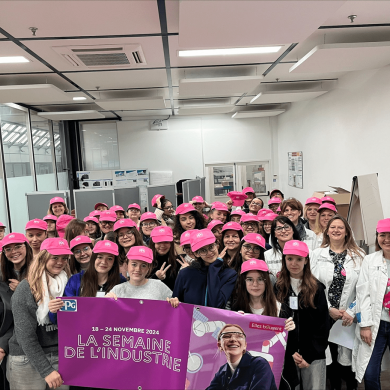
To coincide with the Industry Week 2024 event, the “Elles bougent” association organised a speed-discovery morning at Secure Systems & Services (VINCI Energies subsidiary). The programme included a shared breakfast, a tour of the company, a presentation of the company’s women, live discussions and the opportunity to stay in contact for internships and work-study schemes.
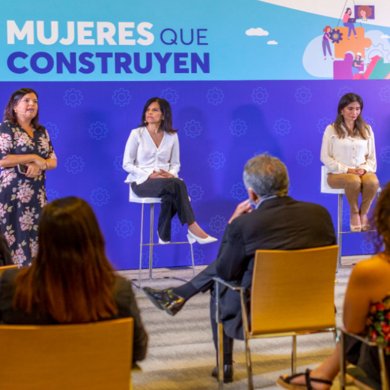
In 2020, Lima Expresa (VINCI Highways / VINCI Concessions) inaugurated its first “Girls on the Move Week” in Peru. The event brought together over 80 young women between the ages of 15 and 25, with a conference on the opportunities for STEM careers (science, technology, engineering and mathematics). This initiative has since spawned similar events, including “Girls in Tech & Science” in 2021, “Mujeres que construyen” in 2022 and 2023, and the creation of a mini-series in 2024.
Increasing the number of women in the company: from commitment to action
To sustainably close the gender gap in scientific and technical careers, companies are taking action in several areas at the same time throughout the career path, ranging from recruitment through to skills development.
Recruitment is a key part of the process. A growing number of companies are implementing gender diversity targets and overhauling their procedures to broaden their talent pipeline. VINCI encourages recruitment or promotion for management roles with the condition that the final list of candidates should include at least one woman. The Group also keeps a close eye on women’s career paths to improve mobility and promotions, especially through female people reviews and executive reviews.
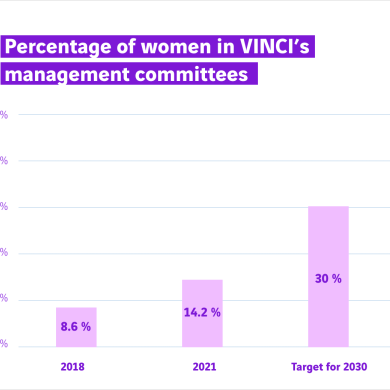
At VINCI, the percentage of women in management roles has increased from 15% to more than 23%, while their representation in the Group’s management committees has more than doubled from 8.6% in 2018 to 20.5% late 2024. The Group has set a target of achieving a 30% increase in the percentage of women in its executive committees and management roles by 2030.

Every year, the PluriElles programme masterminded by VINCI Autoroutes in 2019 provides 14 talented women with a complete support package. Every participant is subsequently mentored for eight months by one of VINCI Autoroutes’ executive officers.
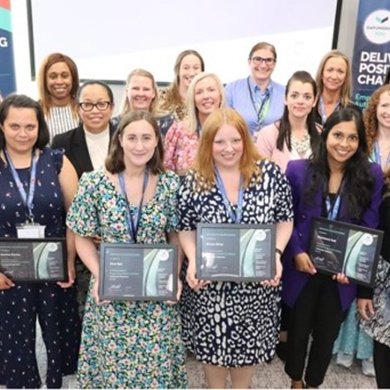
The Equal Plane scheme set up at London Gatwick Airport (VINCI Airports / VINCI Concessions) in 2021 comprises over 160 members (a mix of men and women). Equal Plane proactively offers a wealth of ideas for improving HR maternity policies, improving dedicated facilities for women, delivering advice to women employees, and providing mentorship and training.
Introducing more women into the scientific and technical sectors stands as a major challenge from recruitment through to training, including efforts to stamp out stereotypes, and requires an overarching strategy involving the public authorities and private companies.
Sources
[1] Rapport de l’UNESCO pour la science 2021
[2] La carrière des femmes en sciences se heurte toujours aux préjugés de genre, selon l’UNESCO (février 2021)
[3] De l’école à l’entreprise, les femmes toujours découragées de faire carrière dans les métiers scientifiques et techniques (lemonde.fr, octobre 2024)
[4] La proportion des femmes dans le bâtiment est en "constante évolution" (batiactu.com, mars 2023)
[5] Les femmes toujours sous-représentées dans les secteurs écologique et numérique (eesc.europa.eu, décembre 2023)
[6] Les métiers de l’industrie se féminisent (francetravail.fr)
[7] Pourquoi y a-t-il si peu de femmes en science ? Thomas Breda professeur d’économie à l’École d’économie de Paris et chercheur au CNRS (mise en ligne : 06/10/2014)
[8] Les Women's Empowerment Principles (WEPs) sont portés conjointement par ONU Femmes et le Pacte Mondial des Nations Unies (weps.org)
[9] La directive européenne mise sur la transparence des rémunérations pour réduire les inégalités femmes-hommes (lemonde.fr, novembre 2024)
[10] Le ministère s'engage pour l'égalité professionnelle (education.gouv.fr, mise à jour : décembre 2024)
[11] Égalité entre les filles et les garçons (education.gouv.fr, mise à jour : novembre 2024)
Subscribe
Stay tuned : receive our newsletter
Every quarter, discover new articles, exclusive features and experts' views delivered straight to your inbox.
Most viewed
Explore more
Marina Lévy - Companies at the heart of ocean conservation issues
Marina Lévy, oceanographer, research director at the CNRS and ocean advisor to the president of the French National Research…
Building with and for nature
Whether creating barrages, stripping away topsoil, cutting down trees or digging channels, humans have spent thousands of…
Bridging the construction gender gap: paving the way to a career in industry for women in Colombia
In 2025, the Ruta 40 consortium led by VINCI Construction Grands Projets completed work on widening and upgrading the Bogotá…

